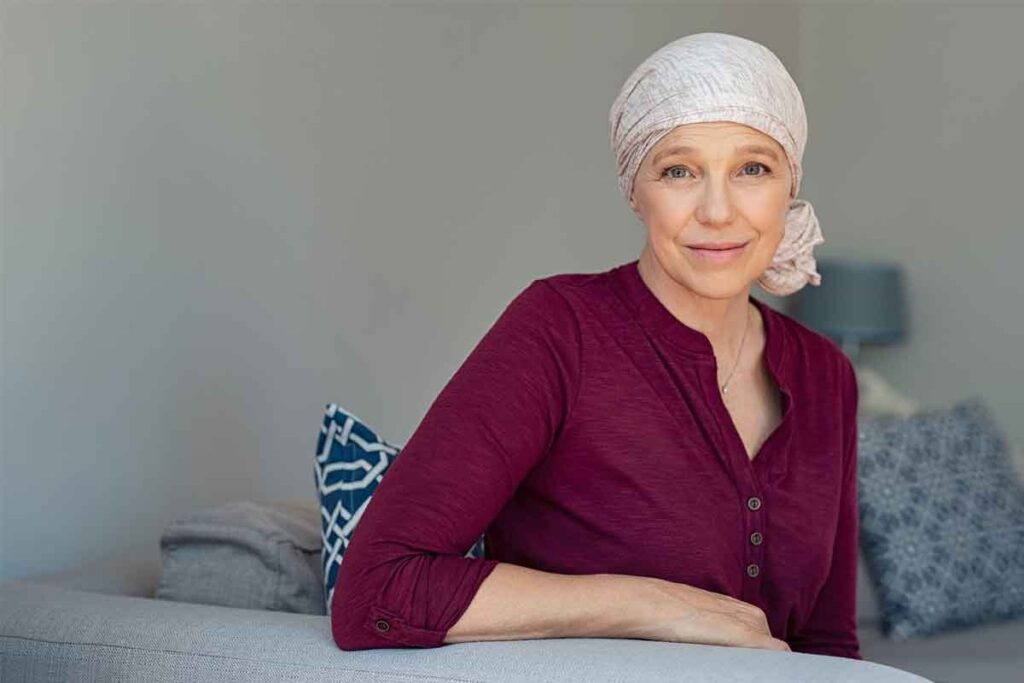Last Updated on October 21, 2025 by mcelik

Modern medicine has made big strides in fighting cancer. Now, patients have more hope than ever. Treatments are getting better and more tailored to each person. At Liv Hospital, we aim to provide top-notch healthcare and support for our patients.
The world of cancer treatment is changing fast. New therapies are coming up to fight the disease. A 2020 Globocan report showed 19.3 million new cancer cases and 10 million deaths worldwide. This shows we need better ways to heal cancer.

Cancer treatment has changed a lot in recent years. We now understand cancer better, leading to new treatments. These new options give hope to people all over the world.
Oncology has moved from old, general treatments to new, targeted ones. Precision medicine is key, making treatments fit each person’s cancer. This is based on the cancer’s genetic makeup.
Memorial Sloan Kettering Cancer Center (MSK) leads in cancer treatment advances. They’ve introduced new surgeries and cancer vaccines. These have made treatments better and opened doors for more research.
Oncologists use many tools to choose the best treatments. They look at the patient’s health, cancer type and stage, and tumor genetics. This helps them pick the right treatment.
| Factors Influencing Treatment Decisions | Description | Impact on Treatment |
| Genetic Profiling | Analyzing the genetic makeup of the tumor | Identifies possible therapy targets |
| Cancer Stage | Determining how far cancer has spread | Helps decide between local or systemic treatments |
| Patient Health | Looking at the patient’s overall health | Effects how well they can handle certain treatments |
By looking at these factors, doctors can make a treatment plan that fits each patient. This makes treatment more likely to work.

Precision medicine is changing how we fight cancer. It makes treatment plans fit each patient’s unique tumor. This new way of treating cancer is more effective and has fewer side effects.
Genetic profiling is key in precision medicine. It helps doctors find the genetic mutations causing a patient’s cancer. This lets them choose treatments that target these mutations, making cancer control better.
For example, genetic tests can find BRCA1 and BRCA2 mutations. These are linked to higher risks of breast and ovarian cancers. Doctors can then suggest treatments like PARP inhibitors, which are very promising for these cancers.
Genetic profiling in cancer treatment has many benefits:
The targeted drug selection process analyzes a tumor’s genetic profile. It looks for specific mutations that therapies can target. This ensures patients get the best treatment for their cancer type.
For example, the FDA has approved drugs like KRAS inhibitors for lung cancer. By matching drugs to patients based on genetic profiles, treatment outcomes get better.
“The integration of genetic profiling into clinical practice has been a game-changer in oncology, enabling us to provide more personalized and effective care to our patients.”
Precision medicine is showing great promise in improving cancer treatment. Tailored treatment plans based on genetic profiles lead to better response rates and longer survival times.
Research shows patients on targeted therapies have a better quality of life and fewer side effects than those on traditional chemotherapy. For lung cancer, targeted therapies have response rates of 40% to 60%, much higher than traditional treatments.
| Treatment Approach | Response Rate | Survival Benefit |
| Traditional Chemotherapy | 20-30% | Moderate |
| Targeted Therapy | 40-60% | Significant |
In conclusion, precision medicine is a big step forward in cancer treatment. It offers personalized therapy that improves outcomes and reduces side effects. As genetic profiling technology gets better, we’ll see even more effective treatments.
Immunotherapy is a powerful tool against cancer. It uses the body’s immune system to fight cancer cells. This method has changed cancer treatment, giving hope to patients everywhere.
Immunotherapy boosts the body’s defenses to fight cancer cells better. Different types of immunotherapy work well against various cancers.
Immune checkpoint inhibitors help the immune system see cancer cells. They block proteins that let cancer hide. This makes it easier for the immune system to attack and destroy cancer cells.
CAR T-cell therapy takes T-cells from the blood, changes them to find cancer cells, and puts them back. It has been very effective in treating blood cancers.
Key benefits include targeting specific cancer cells and the chance for long-term remission.
Bispecific antibodies connect cancer cells and immune cells for destruction. They have shown promise in early trials.
TIL therapies take immune cells from tumors, grow them, and put them back in the patient. This method works well for some cancers, like melanoma.
MSK researchers have greatly helped TIL therapies, advancing immunotherapy.
Immunotherapy is a big step forward in cancer treatment. It offers new options and better outcomes. As research grows, we’ll see more ways to fight cancer.
Advances in targeted therapy now make precision-guided cancer cell treatment possible. This method focuses on specific genetic mutations or proteins in cancer. It aims to harm healthy cells less, reducing side effects and improving patient results.
New KRAS inhibitors are showing promise in treating hard-to-reach tumors. KRAS mutations are common in lung, colorectal, and pancreatic cancers. Breakthroughs in KRAS inhibition offer new hope for these cases.
Many KRAS inhibitors are in clinical trials now. They target the KRAS protein, stopping cancer cell growth.
Antibody-drug conjugates (ADCs) are a new way to fight cancer. They use antibodies to find cancer cells and then deliver chemotherapy. This method is safer for healthy cells and more effective.
ADCs are showing great results in lung and breast cancers. They target specific proteins on cancer cells, killing them while reducing side effects.
Small molecule inhibitors are key in targeted therapy. They block molecular targets that help cancer cells grow. This stops cancer from spreading.
Examples include tyrosine kinase inhibitors, used in many cancers. They offer a targeted treatment, improving patient outcomes and quality of life.
| Therapy Type | Mechanism | Cancer Types |
| KRAS Inhibitors | Directly target KRAS protein | Lung, Colorectal, Pancreatic |
| Antibody-Drug Conjugates | Deliver chemotherapy directly to cancer cells | Lung, Breast |
| Small Molecule Inhibitors | Block cancer growth signals | Various |
Cancer treatment has changed a lot. Now, we use hormonal therapy to fight hormone-dependent cancers. This method works by changing hormone levels or blocking their effects on cancer cells. It’s very good for cancers that grow because of hormones, like some breast and prostate cancers.
For hormone receptor-positive breast cancer, hormonal therapy is a key treatment. It aims to lower estrogen levels or stop estrogen from affecting breast cancer cells. Common treatments include:
These treatments can be used alone or together with other therapies. Studies show they greatly improve outcomes for hormone receptor-positive breast cancer patients.
“Hormonal therapy has become a cornerstone in the treatment of hormone receptor-positive breast cancer, improving survival rates and quality of life.”
In prostate cancer, we aim to lower male hormones (androgens), like testosterone. These hormones help prostate cancer grow. Common treatments include:
| Therapy Type | Description | Examples |
| Gonadotropin-releasing hormone (GnRH) agonists | Reduce testosterone production | Leuprolide, Goserelin |
| GnRH antagonists | Immediately reduce testosterone levels | Degarelix |
| Anti-androgens | Block androgen receptors | Bicalutamide, Flutamide |
Hormonal therapy is very effective but has side effects. Common ones are hot flashes, fatigue, and changes in libido. To deal with these and get the most from treatment, doctors and patients work together to:
By managing hormonal therapy well, we can help patients get the best results and keep their quality of life good.
Now, we can destroy cancer with precision thanks to new radiation therapy methods. These advanced treatments are key in fighting cancer. They target cancer cells well, keeping healthy tissue safe. We’re seeing big improvements in these treatments, making life better for patients.
Proton therapy is a big step forward in fighting cancer. It sends radiation right to tumors, protecting nearby healthy tissue. This is great for tumors in sensitive spots like the brain and spine. It cuts down on side effects and long-term harm.
Proton therapy works by focusing energy at a specific point. This point, called the Bragg peak, matches the tumor’s depth. So, it hits the tumor hard but spares other tissues.
Stereotactic Body Radiation Therapy (SBRT) gives tumors a big dose of radiation with great precision. It’s used for small tumors in places like the lung and spine. With just a few sessions, SBRT can kill tumors effectively.
| Treatment Characteristics | Proton Therapy | SBRT | Brachytherapy |
| Precision | High | High | High |
| Delivery Method | External Beam | External Beam | Internal |
| Treatment Duration | Several weeks | 1-5 sessions | Varies (days to permanent) |
Brachytherapy puts radioactive material close to the tumor. It gives a strong dose of radiation to the tumor, protecting healthy tissue. It can be temporary or permanent, based on the cancer type and treatment goals.
These advanced radiation therapies give patients effective treatments. Whether it’s proton therapy, SBRT, or brachytherapy, the goal is the same. We aim to kill cancer cells while keeping patients’ quality of life high.
Minimally invasive surgery is changing cancer treatment. It makes patients recover faster and have better results. Now, surgeries are done in ways that hurt patients less but are more effective.
Robotic surgery is a big step forward in cancer surgery. It uses advanced robots to help surgeons do complex tasks with more precision and control. “Robotic surgery has been shown to reduce complications and improve recovery in various cancer surgeries,” studies say. This tech makes surgeries more precise, leading to better results for patients.
Laparoscopic surgery, or keyhole surgery, uses small cuts for a camera and tools. It causes less damage than open surgery. Laparoscopic techniques help treat many cancers. They lead to less pain, shorter hospital stays, and quicker recovery.
Image-guided surgery is another big leap in surgery. It uses live images to help surgeons find and remove hard-to-reach tumors. This method is key to avoiding damage to healthy tissues and making surgeries more effective.
As we keep improving these methods, the future of cancer surgery looks bright. With robotic surgery, laparoscopic techniques, and image-guided procedures, patients will have better results, fewer problems, and a quicker return to their lives.
“The integration of technology and surgical expertise is transforming the landscape of cancer treatment, giving patients new hope and a better quality of life.”
Combining different treatments is changing cancer care, giving patients new hope. By mixing treatments, we can make them work better together. This leads to better results for patients.
Chemoimmunotherapy blends old-school chemotherapy with new immunotherapy. It uses chemotherapy to kill cancer cells. At the same time, it boosts the immune system to fight cancer better.
Research shows chemoimmunotherapy can improve treatment results for many cancers. For example, adding pembrolizumab to chemotherapy has greatly helped lung cancer patients. It has made them live longer and their cancer not grow as fast.
Using radiation and immunotherapy together is very promising. This combo can make the immune system attack tumors not just where the radiation is. It’s called the abscopal effect.
Studies say this combo works because it releases tumor antigens and activates immune cells. It also changes the tumor environment. More research is needed to fully understand and use this combo in cancer treatment.
For advanced cancers, using a mix of treatments like surgery, chemotherapy, and immunotherapy is best. Tailoring treatments to each patient and their cancer can lead to better results.
A recent study showed a multi-modal approach can greatly improve survival rates in stage IV melanoma. It’s a big step forward in cancer treatment.
| Treatment Modality | Cancer Type | Key Benefits |
| Chemoimmunotherapy | Lung Cancer, Melanoma | Improved overall survival, enhanced immune response |
| Radiation and Immunotherapy | Various solid tumors | Abscopal effect, increased anti-tumor immune response |
| Multi-Modal Treatment | Advanced Cancers | Personalized treatment plans, improved clinical outcomes |
As we keep working on combination therapies, it’s clear they’re a big step forward. By mixing treatments in new ways, we can give patients better care. This is true for many types of cancer.
The future of cancer care is changing fast. New research and trials are finding better ways to treat cancer. This means patients can get more effective and personal care.
Thanks to precision medicine and other new treatments, patients are doing better. We’re moving towards treatments that fit each person’s needs. This is a big step forward.
New treatments are coming, giving hope to those fighting cancer. These changes are changing how we fight cancer. It’s important to keep up with these new ways.
By using these new treatments, we can make a difference for cancer patients everywhere. The progress we’re seeing shows the power of working together in medicine.
The top cancer treatments include precision medicine, immunotherapy, and targeted therapy. Hormonal therapy, radiation therapy, and minimally invasive surgery are also effective. Combination therapy approaches are often used too.
Precision medicine makes treatment plans more personal. It uses a patient’s genetic profile to tailor treatments. This leads to better results and fewer side effects.
Immunotherapy uses the body’s immune system to fight cancer. It includes immune checkpoint inhibitors and CAR T-cell therapy. Bispecific antibodies and TIL therapies are also used.
Targeted therapy is precise and effective. It targets specific genetic mutations or proteins in cancer cells. This approach offers better results with fewer side effects.
Hormonal therapy controls hormone levels or blocks their effects on cancer cells. This slows or stops tumor growth in cancers like breast and prostate cancer.
Radiation therapy has seen big improvements. Techniques like proton therapy, SBRT, and brachytherapy are now used. They target cancer cells while protecting healthy tissue.
Minimally invasive surgery is precise and less invasive. It allows for complex procedures with less trauma. This improves outcomes and shortens recovery times.
Combination therapy combines different treatments for better results. It creates personalized plans that meet each patient’s needs. This approach improves treatment outcomes.
There are many cancer treatment options. These include surgery, chemotherapy, and radiation therapy. Immunotherapy, targeted therapy, hormonal therapy, and combination therapy are also available.
Oncologists consider many factors to choose the best treatment. They look at the cancer type and stage, genetic profiling, and the patient’s health. This helps create a personalized plan.
Therapy of cancer is key in treatment. It offers options like immunotherapy, targeted therapy, and hormonal therapy. These can be used alone or together for the best results.
Cancer can be treated in many ways. Options include surgery, chemotherapy, and radiation therapy. Immunotherapy, targeted therapy, hormonal therapy, and combination therapy are also used. Each treatment is tailored to the patient’s needs.
Cancer treatment varies based on the type and stage of cancer. The patient’s overall health is also considered. Treatments may include surgery, chemotherapy, radiation therapy, immunotherapy, targeted therapy, hormonal therapy, or combination therapy.
Cancer treatment options are diverse. They include surgery, chemotherapy, and radiation therapy. Immunotherapy, targeted therapy, hormonal therapy, and combination therapy are also available. Each option is tailored to the patient’s unique needs.
Subscribe to our e-newsletter to stay informed about the latest innovations in the world of health and exclusive offers!
WhatsApp us